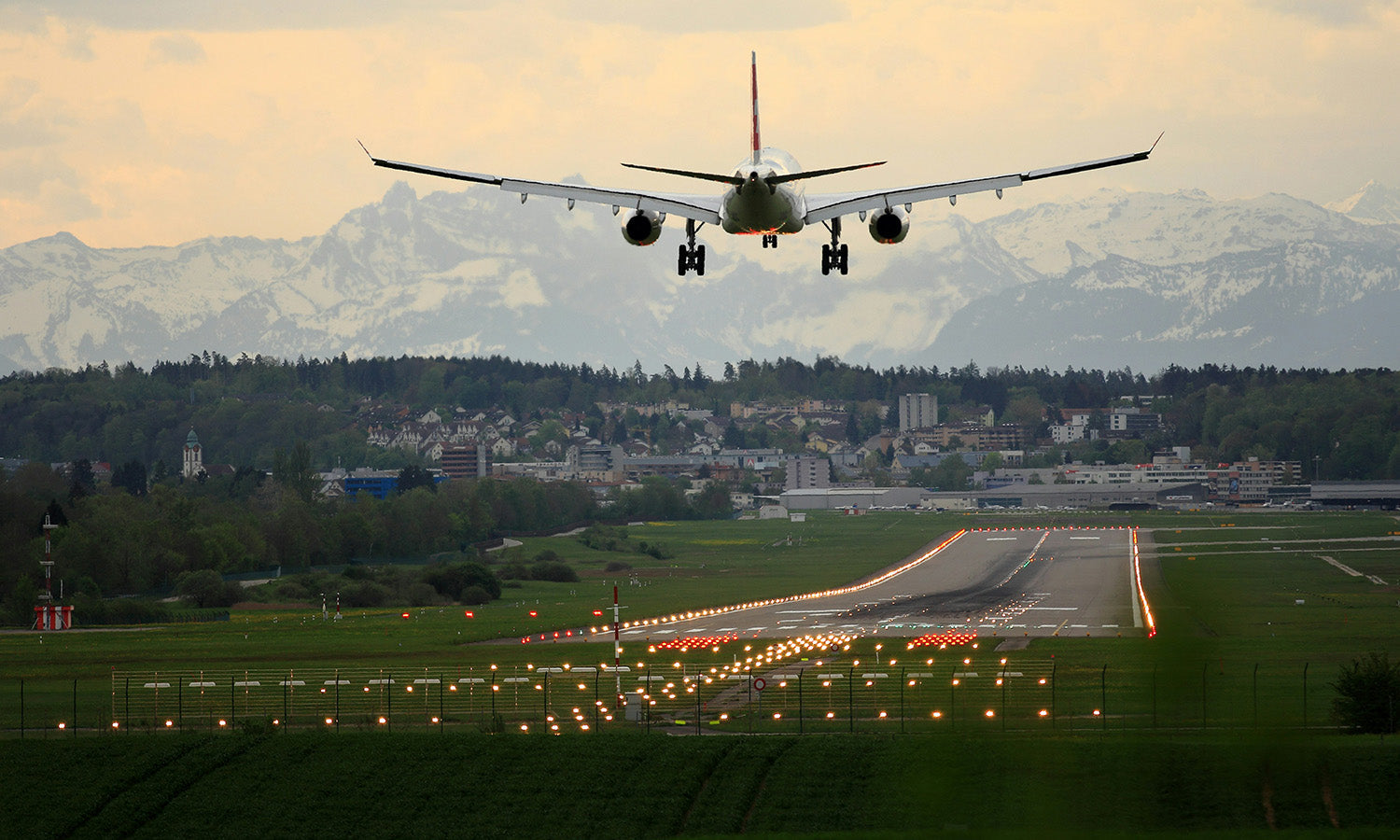Did you know that simply shifting your flight from Sunday to Wednesday can save you 13% on airfares, according to Google's latest data?
Or that booking at the right time window – which varies dramatically depending on where you're going – can be the difference between a bargain and a budget-buster?
Most travellers assume flight pricing is random chaos, but it's not. Airlines use sophisticated algorithms that respond to demand patterns, and once you understand these patterns, you can work with them rather than against them. You don't need luck or last-minute deals – you need timing.
Here's how to master it.
The Booking Window That Actually Matters
Forget the old advice about booking everything six weeks out. The truth is, your destination determines your timeline.
For domestic Australian flights, one to two months ahead hits the sweet spot. Airlines have typically assessed demand by then and adjusted prices accordingly. But if you're dreaming of Asian beaches or Tokyo's cherry blossoms, you need to think much bigger. Travel experts recommend booking Asia and Oceania trips five to seven months before takeoff – yes, that means booking your October Bali trip in March.
Planning a European summer? Start monitoring flights in February for that July departure. Southern Europe gets particularly packed during high season, so giving yourself three to five months lead time isn't just recommended – it's essential. The same timeline applies to those bucket-list long-haul flights to the Americas.
The key is understanding that international routes, especially from Australia, have less competition and fewer seats. Airlines know this and price accordingly, rewarding early planners and punishing procrastinators.
Why Wednesday Became the Magic Day
There's an enduring myth that you should book flights on Tuesday afternoon. This used to be true when airlines loaded fares weekly, but those days are gone. What hasn't changed, however, is which days are cheapest to actually fly.
Wednesdays remain the consistent winner for both domestic and international travel. The reason is simple: business travellers avoid it, and leisure travellers prefer weekends. This creates a reliable demand dip that translates directly to your savings – about 13% compared to weekend flights, sometimes more.

Tuesdays run a close second, while Saturdays can surprise you with decent fares, particularly on midday flights. The logic holds: Saturday morning is too early for weekenders, Saturday night too late. That afternoon sweet spot often yields unexpected value.
Friday mornings and Sunday evenings? These are when everyone wants to fly, and airlines know it. The premium can reach 20% or higher, especially on popular routes.
The Morning Advantage Nobody Talks About
If your priority is actually arriving on time, not just saving money, then timing matters even more. Early morning flights – those 6am departures everyone dreads – have a secret superpower: they're about 25% more reliable than afternoon flights.
The reason is operational rather than magical. That first flight of the day has been sitting at the airport overnight, ready to go. It hasn't been delayed coming from somewhere else, hasn't hit weather systems that build through the day, and hasn't suffered from the cascade of delays that accumulate across airline networks.
This reliability factor becomes crucial for international connections. Missing a connection in Singapore because your 3pm flight was delayed can cost far more than any savings from choosing a cheaper afternoon departure.
Understanding Your Competition
Here's something most guides won't tell you: know who you're competing with for seats. Australian school holidays create predictable price surges, but they vary by state. Queensland's winter holidays send prices soaring in late June and July. The September-October break affects different states at different times.
The quietest booking periods often sit just outside these peaks. Early February, after schools return but before business travel ramps up, consistently offers value. Late October into early November provides another window, sitting perfectly between school holidays and the Christmas rush.
May can be brilliant for international travel – you're past Easter, before the July exodus, and Northern Hemisphere destinations are entering their best weather while Australians aren't yet thinking about escaping winter.
When Booking Early Really Matters
For peak periods – Christmas, Easter, and July school holidays – the normal rules don't apply. Airlines know these dates will sell regardless, so they start high and stay high. Your only defence is booking early, sometimes three to five months ahead.
But here's the counterintuitive bit: for these peak times, being flexible by even a day can save hundreds. Flying on Christmas Day itself, rather than December 23rd, can halve your fare. Departing on Good Friday instead of the Thursday before makes a similar difference.
The New Reality of Dynamic Pricing
Perhaps the biggest change in recent years is how airlines price their seats. Gone are the weekly fare loads and predictable patterns. Today's pricing changes constantly, sometimes hourly, responding to searches, bookings, competitor prices, and even weather forecasts.
This means the old "clear your cookies" advice is outdated (airlines use far more sophisticated tracking now), but it also means price alerts have become essential. Set them up the moment you start thinking about a trip, not when you're ready to book.
The Tools That Actually Make a Difference
While everyone knows about comparison sites, smart Australian travellers have learned to go deeper. Google Flights remains the gold standard for tracking prices – set up alerts six months out for international trips and let it do the watching for you. Its calendar view showing price variations across an entire month is particularly valuable when you have flexible dates.
For Australian-specific deals, Beat That Flight aggregates sales that often don't appear on international booking sites. It catches those Jetstar sales to Bali that might only last a few hours, or Virgin's periodic Asia pushes that mainstream sites miss.
Speaking of which, if you're not checking Jetstar's Friday Frenzy sales, you're missing some of the best deals available from Australia. Every Friday, usually around 4pm AEDT, they release sale fares for travel several months out. Set a phone reminder – these sales often end by Monday, and the best routes sell within hours.
Virgin plays a different game with their Happy Hour sales, dropping randomly on Tuesday or Wednesday afternoons. They're less predictable but often deeper discounts, especially for business class upgrades that can be cheaper than competitors' economy fares.
The trick isn't using all of these religiously – it's knowing which tool fits your travel style. Planning a specific trip? Google Flights' tracking is unbeatable. Flexible about destination? Beat That Flight's deal alerts might send you somewhere unexpected. Chasing the absolute lowest fare? Those airline flash sales are worth the calendar reminder.
Making It Work for You
If all this seems overwhelming, here's your simple framework: For domestic flights, book six weeks out and fly midweek. For Asia, start watching five months early using Google Flights alerts, and book when you see a good price. For Europe or Americas, give yourself at least three months, more for peak season.
Choose Wednesday flights when possible, Tuesday as second choice. Consider early morning departures for important connections. Set up your Friday reminder for Jetstar sales if you're flexible about travel dates. And always – always – check prices for the days either side of your ideal dates.
The difference between understanding these patterns and ignoring them isn't just money, though the savings are real. It's the difference between feeling like airfares happen to you versus taking control of them.
Next time you book a flight, you'll know exactly when to click "purchase" – and more importantly, when to wait.
Have you discovered any route-specific booking secrets that break the Wednesday rule? Perhaps Saturday flights to Bali from Perth are mysteriously cheap, or Thursday's the magic day for Melbourne-Gold Coast? Share your finds below!














Leave a comment